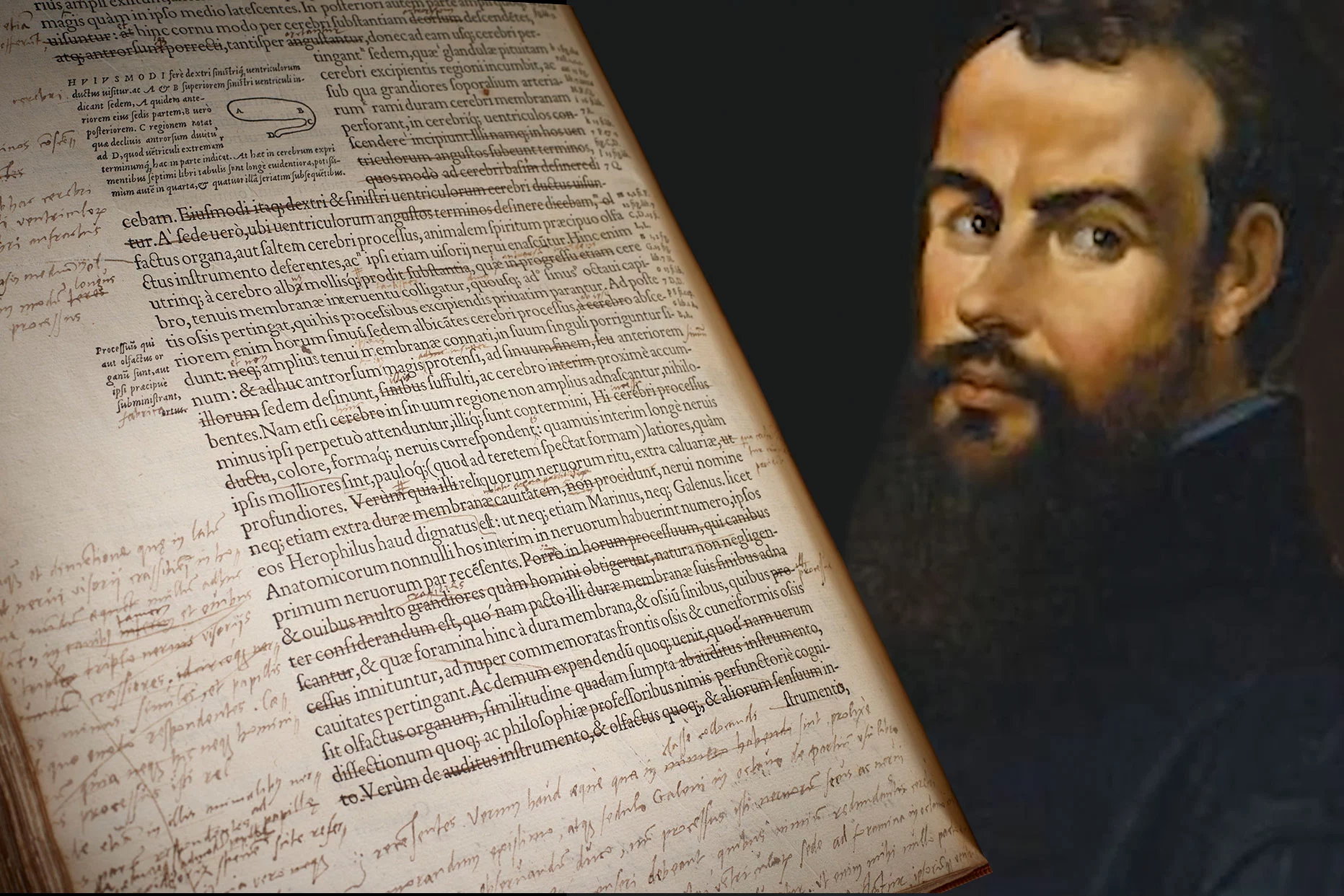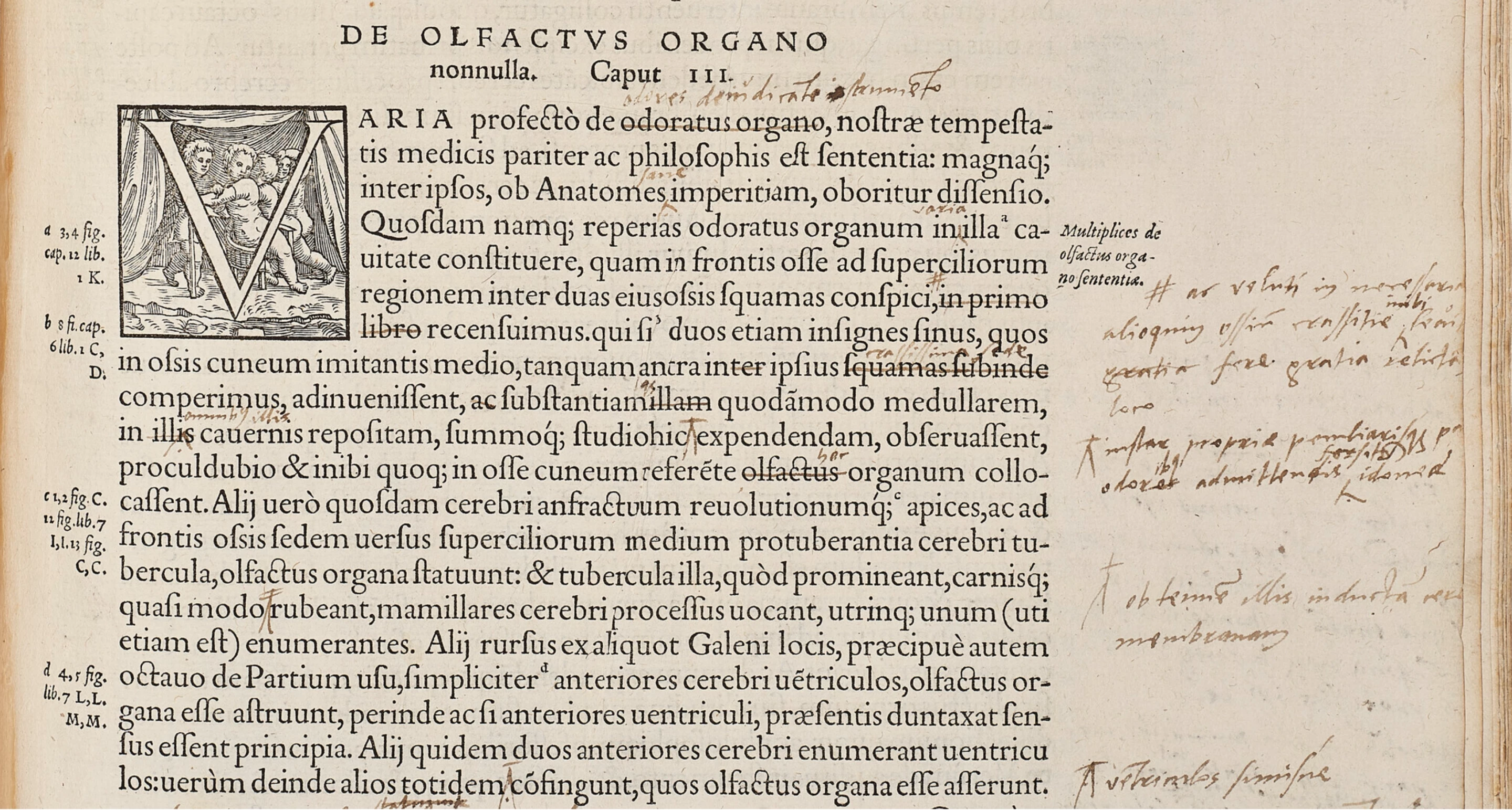In 2007 a retired Canadian doctor paid €13,200 (US$14,256) for a well-used second edition of Andreas Vesalius' De humani corporis fabrica (1555), one of the most influential books in history. Only 150 copies are known. The book had been in the hands of collectors for more than four centuries and had extensive latin annotations by an unknown hand.
Book collectors tend to shun books with annotations as they are often seen as desecrations of the finished work, particularly so with important works, but even more so when a book is as large, beautiful and of such immense historical gravitas as De humani corporis fabrica.
When it was published in 1543, Vesalius' illustrated work advanced anatomy 1,300 years, superseding Galen's work (circa 150 CE) as the primary reference for physicians across Europe.
As the Met wrote of its own copy of De humani corporis fabrica: "When Andreas Vesalius (1514–1564) first published his radical De humani corporis fabrica (On the Structure of the Human Body), the ancient texts of Aristotle and Galen were still judged authoritative in the medical schools of Europe. By performing his own dissections, Vesalius discovered errors in the ancient authors' teachings. The De humani corporis fabrica, which drew attention to these flaws, initially threatened the academic medical establishment but ultimately won Vesalius admiration and a post as court physician to Charles V, to whom he dedicated the volume."
That his magnum opus was published prior to his thirtieth birthday speaks volumes for the genius of Vesalius (1514 - 1564), and although his work is now regarded as the foundation of modern human anatomy, he faced some vehement opposition from the medical establishment, as he was questioning everything that came before. Skepticism is now part of the scientific method, but at that time, it was not. One PBS article celebrating the 500th anniversary of Vesalius' birth (in 2014), was headlined as: "Skepticism in medicine turns 500."
The book changed not just anatomy, but medicine in general and most importantly, how it was taught. The design, typography and detailed cutaway drawings of the human body used in the book helped advance teaching by 1,500 years.
Some of humanity's greatest treasures appear at auction, and this book, which qualifies as a landmark foundational scientific document, turned out to have the revisions for an unpublished third edition in the hand of Andreas Vesalius himself. Sold during an online Christie's auction today, the book purchased in 2007 for $14,256, fetched $2,228,000.

Identifying the annotations
When the Canadian Pathologist and dedicated bibliophile Dr. Gerard Vogrincic, received his book from German auction house Ketterer Kunst, he quickly realized that the annotations were very unusual. For a start, he had long collected annotated books, and this book had far more annotations than he had ever seen in one book.
Most importantly, even though Vogrincic could not read Latin, he realized what 500 years of collectors had not - that the annotations were the rewriting of the printed sentences and paragraphs rather than the making of notes, and there was only one logical explanation.
Once Vogrincic realized that such rewriting indicated that the handwritten notations might be those of Vesalius, he set about proving his hypothesis. The first hurdle was to match known examples of Vesalius' handwriting with that in the book, but Vesalius' book had many understandable consequences and challenging the status quo is not for the faint of heart.
Vesalius' was attacked so ferociously by the medical establishment that at one point he burned all his notes and dropped out of Academia entirely. One of Vesalius former professors wrote at the time, “I implore his Imperial Majesty to punish severely as he deserves, this monster born and bred in his own house. This worst example of ignorance, ingratitude, arrogance and impiety. To suppress him, so that he may not poison the rest of Europe with his pestilential breath.”

Vogrincic found that when Vesalius' had burned all his notes, he almost entirely eradicated the known examples of his handwriting, and extant samples are now much rarer than his books - roughly 150 copies of this book have survived 500 years, but less than ten copies of Vesalius' letters are known.
Vogrincic finally managed to find two of those letters and copies were sent to him by mail.
We've all waited by the mailbox for an important envelope, so it isn't hard to identify with Vogrincic opening the envelope with those two letters inside, and then realizing that the fairytale had come true.
Imagine the thrill of comparing Vesalius' known handwriting with the notes in the margin of his book and slowly realizing that every single flourish matched. Even to the untrained eye, it was absolutely clear that it was from the same hand.
Instead of a desecrated second edition, Vogrincic was holding the autograph notes of one of history's most significant scientists for an unpublished third edition of one of the most influential books ever written.
Not surprisingly, the $2.228 million price of this book now makes it one of the top 10 most expensive scientific documents in auction history, surpassing the USD $1,652,500 price paid at a 1998 Christie's auction for the dedication copy Vesalius presented to the Holy Roman Emperor Charles V in the autumn of 1543. That copy is easily recognizable, as it is the only known color copy.
Our recognition must also go to Gerard Vogrincic, whose love of historically important books unearthed this treasure for all humanity. The book had been in the hands of collectors for more than four centuries and had extensive latin annotations that had never been identified. Vogrincic's fascination with preserving our scientific heritage, his admiration of Vesalius and his determination to understand the "marginalia" demonstrates how well he learned from Vesalius' example.
Christie’s has announced that Andreas Vesalius' own annotated copy of his magnum opus, De humani corporis fabrica, was purchased at auction by the Flemish Community, Department of Culture, one of the three constitutionally mandated regional governments in Belgium, together with the university, KU Leuven. It will hence be on display at KU Leuven, the oldest university in the Low Countries.
Andreas Vesalius was born Andries van Wesel in Brussels in 1514 and his name was latinized when he moved to Italy to study. His initial university had been at the University of Leuven, so Vesalius' most important book is essentially returning home.
Christie's Rhiannon Knol (pictured above with the annotated Fabrica) said of the sale: “Christie's has been honored to handle the sale of this highly important book, a recent discovery and a unique piece of intellectual history. We are especially delighted that it now returns to Vesalius's alma mater and to the care of the Flemish people.”






